Key Takeaways
1. Design is problem-solving, not art or magic
Design is how we communicate what an object does, or its function, through its shape or form.
Design as a craft. Design is a systematic approach to solving problems within constraints, not a mysterious artistic process. It involves research, strategy, and execution to create solutions that meet specific goals. Good designers are skilled professionals who use analytical and creative skills to solve business problems, not artists expressing themselves.
Value of design. Well-designed products and services can significantly impact a business's success by improving user experience, increasing conversions, and differentiating from competitors. Examples:
- Nest Thermostat: Revolutionized a mundane product through thoughtful design
- Apple products: Consistent success through design-led approach
- Successful websites: Prioritize content and user needs over visual flair
2. Hire designers based on their process and problem-solving skills
A designer who can't explain their rationale is useless—open to the whims and desires of everyone around them.
Evaluating designers. Look for:
- Strong problem-solving skills
- Ability to explain their design decisions
- Experience working in teams
- Diverse portfolio showing adaptability
- Clear communication skills
Red flags:
- Only showing personal projects or student work
- Inability to explain design rationale
- Lack of real-world client experience
- Unwillingness to challenge client assumptions
When hiring, focus on finding someone who can articulate their thought process and demonstrate how they've solved similar problems in the past. A good designer should be able to walk you through their portfolio, explaining the challenges they faced and how their solutions addressed specific business goals.
3. Set clear goals and expectations for the design project
Design is the rendering of intent.
Define project goals. Before starting any design work, clearly articulate:
- Business objectives
- User needs
- Success metrics
- Project constraints (budget, timeline, resources)
Establish roles and responsibilities. Clearly define:
- Decision-makers
- Approval process
- Communication channels
- Deadlines and milestones
Setting clear expectations from the outset helps prevent misunderstandings and ensures everyone is working towards the same objectives. This alignment is crucial for the project's success and helps the designer create solutions that truly address your business needs.
4. Trust your designer and resist the urge to micromanage
You hire designers to solve problems, not carry out your wishes.
Empower your designer. Give them the authority to make decisions within their expertise. Avoid prescriptive feedback like "make the logo bigger" or "move this button here." Instead, focus on communicating problems or concerns you have with the current solution.
Respect the process. Good design takes time and iteration. Trust that your designer's process – including research, strategy, and testing – will lead to better outcomes. Resist the urge to jump to visual solutions before the underlying problems are fully understood.
Benefits of trust:
- Encourages innovation and creative problem-solving
- Allows designers to leverage their full expertise
- Results in more effective solutions that meet business goals
5. Provide constructive feedback focused on objectives, not personal preferences
Your personal tastes are not a success metric.
Objective feedback. When evaluating design work, focus on how well it meets the project's goals and user needs, rather than personal aesthetic preferences. Ask questions like:
- Does this solve the problem we identified?
- Will this help us achieve our business objectives?
- Is this aligned with our users' needs and behaviors?
Avoid subjective language. Instead of saying "I don't like it" or "Make it pop," provide specific, goal-oriented feedback:
- "This layout doesn't emphasize our call-to-action enough."
- "The current design doesn't reflect our brand's professional tone."
- "Users might struggle to find the most important information quickly."
By focusing on objectives rather than personal taste, you'll help your designer create more effective solutions and avoid unproductive revisions based on subjective preferences.
6. Effective communication is crucial throughout the design process
Clear, honest communication is the best way to keep a project healthy.
Regular check-ins. Establish a rhythm of communication with your design team:
- Daily or weekly status updates
- Milestone reviews
- Informal conversations to address concerns early
Be transparent. Share relevant information about your business, including:
- Company goals and strategy
- User data and insights
- Internal constraints or challenges
Encourage open dialogue. Create an environment where team members feel comfortable:
- Asking questions
- Challenging assumptions
- Admitting mistakes
- Sharing concerns
Good communication helps prevent misunderstandings, keeps the project on track, and allows for timely course corrections when needed.
7. Evaluate design based on how well it meets project goals
The right question isn't "Do I like it?" but "Does this meet our goals?"
Define success metrics. Establish clear, measurable criteria for evaluating design success, such as:
- Increased conversions
- Improved user engagement
- Reduced support requests
- Higher customer satisfaction scores
Test with real users. Whenever possible, validate design decisions through:
- User testing sessions
- A/B testing
- Analytics data
- Customer feedback
Align with business objectives. Ensure that design choices support your overall business strategy and brand positioning. Ask:
- Does this design differentiate us from competitors?
- Will this solution scale as our business grows?
- Is this consistent with our brand values and voice?
By focusing on objective measures of success, you can make more informed decisions about design direction and avoid getting caught up in subjective debates.
8. Be prepared to handle conflicts and mistakes professionally
Mistakes happen on every single project, at every point during the project. You can't avoid them. You shouldn't even try.
Address issues promptly. When problems arise:
- Communicate concerns clearly and calmly
- Focus on finding solutions, not assigning blame
- Be willing to compromise when appropriate
Learn from mistakes. Use setbacks as opportunities to:
- Improve processes
- Strengthen communication
- Refine project goals
Know when to escalate. If issues persist or significantly impact the project:
- Have a "come-to-Jesus" meeting to reset expectations
- Be prepared to make tough decisions, including ending the relationship if necessary
Handling conflicts professionally helps maintain a positive working relationship and can often lead to stronger outcomes as challenges are overcome together.
9. Recognize signs of a successful design project
You know how I can tell when a project is going smoothly? When I see someone on my team and yours joking around on Twitter.
Positive indicators:
- Regular, open communication
- Meeting deadlines consistently
- Asking thoughtful questions
- Forming good working relationships
- Gradual improvement in design quality
- Constructive debates and discussions
- Willingness to admit and learn from mistakes
Team dynamics. Look for:
- Excitement about the project
- Collaborative problem-solving
- Trust between team members
Results-oriented progress. Observe:
- Clear path to project completion
- Alignment with business goals
- Positive user feedback or testing results
Recognizing these signs helps you appreciate when things are going well and identify areas for improvement in future projects.
10. Know when and how to end a failing design relationship
Getting fired should never come as a surprise.
Recognize unrecoverable situations:
- Loss of trust between parties
- Consistent failure to meet objectives
- Inability to communicate effectively
- Repeated missed deadlines or budget overruns
Professional separation:
- Communicate issues clearly and give opportunities to improve
- If improvement doesn't occur, be direct about ending the relationship
- Follow contractual obligations and company policies
- Provide honest, constructive feedback about why the relationship didn't work
Learn and move forward:
- Analyze what went wrong to avoid similar issues in the future
- Use the experience to refine your hiring and management processes
- Stay professional and avoid burning bridges unnecessarily
While ending a design relationship is never easy, doing so professionally and learning from the experience can lead to better outcomes in future projects.
Last updated:
FAQ
What's "You're My Favorite Client" about?
- Overview: "You're My Favorite Client" by Mike Monteiro is a guide for clients on how to effectively work with designers. It demystifies the design process and emphasizes the importance of collaboration between clients and designers.
- Purpose: The book aims to help clients understand the value of design, how to hire the right designer, and how to work together to achieve successful outcomes.
- Audience: It is intended for clients who are new to working with designers or those who want to improve their collaboration with design professionals.
- Structure: The book is structured to take readers through the entire design process, from understanding the need for design to evaluating work and handling challenges.
Why should I read "You're My Favorite Client"?
- Improve Collaboration: The book provides insights into how clients can better collaborate with designers, leading to more successful projects.
- Understand Design Value: It helps clients appreciate the value of design as a craft and not just an aesthetic addition.
- Practical Advice: Monteiro offers practical advice on hiring designers, giving feedback, and managing design projects effectively.
- Avoid Common Pitfalls: By reading this book, clients can avoid common mistakes that lead to project failures and learn how to handle issues when they arise.
What are the key takeaways of "You're My Favorite Client"?
- Design is a Craft: Design should be seen as a craft that solves problems, not just an artistic endeavor.
- Client Participation is Crucial: Successful design projects require active participation and clear communication from clients.
- Trust the Process: Clients should trust the designer's process, which includes research and strategy, to achieve the best results.
- Feedback is Essential: Providing constructive, goal-oriented feedback is crucial for the success of a design project.
How does Mike Monteiro define design in "You're My Favorite Client"?
- Design as Problem-Solving: Monteiro defines design as a process of solving problems within a set of constraints.
- Communication through Form: Design communicates an object's function through its shape or form, like a baseball mitt indicating where the hand goes.
- Intentional Process: Design should be intentional, with a clear goal and the expertise to achieve it.
- Beyond Aesthetics: Design is not just about aesthetics; it's about creating solutions that meet user needs and business goals.
What advice does Mike Monteiro give for hiring a designer?
- Look for Problem Solvers: Hire designers who are thoughtful, inventive problem solvers with excellent communication skills.
- Avoid the 'Creatives' Trap: Don't get dazzled by the label "creatives"; focus on hiring professionals who can deliver results.
- Evaluate Portfolios: Look for a diverse range of work in a designer's portfolio to ensure they can adapt to different challenges.
- Consider Fit: Ensure the designer's process and style align with your project's needs and your company's culture.
How should clients give feedback according to "You're My Favorite Client"?
- Be Objective: Feedback should be based on project goals and user needs, not personal preferences.
- Avoid Prescriptive Feedback: Instead of telling designers what to do, explain the problem and let them find the solution.
- Be Direct and Honest: Clearly communicate what works and what doesn't, without worrying about hurting feelings.
- Focus on Goals: Always relate feedback back to the project's goals to ensure alignment and progress.
What are the signs of a successful design project in "You're My Favorite Client"?
- Regular Communication: Open and frequent communication between the client and designer is a positive sign.
- Meeting Deadlines: Consistently meeting deadlines indicates a well-managed project.
- Improving Work: The design work should show continuous improvement and refinement.
- Team Cohesion: A collaborative and respectful relationship between the client and design team is crucial.
What are the red flags when working with designers according to Mike Monteiro?
- Lack of Questions: Designers who don't ask questions may not be fully engaged or understanding the project.
- No Iteration: If the work doesn't improve over time, it may indicate a lack of effort or understanding.
- Poor Communication: Designers who don't communicate regularly or clearly can lead to project issues.
- Defensiveness: Designers who can't take feedback or criticism constructively may not be the right fit.
How does "You're My Favorite Client" suggest handling project failures?
- Identify Mistakes Early: Recognize and address small mistakes before they become big problems.
- Communicate Openly: Have honest discussions about what went wrong and how to fix it.
- Consider a Reset: If the project is beyond recovery, it may be necessary to start over with a new approach or team.
- Learn from Failure: Use failures as learning opportunities to improve future projects.
What is the role of research in the design process according to "You're My Favorite Client"?
- Foundation for Design: Research is the foundation of the design process, providing insights into user needs and behaviors.
- Informs Strategy: It helps in developing a strategy that aligns with business goals and user expectations.
- Reduces Risk: Conducting research minimizes the risk of failure by ensuring design decisions are based on data.
- Mandatory Step: Monteiro emphasizes that research is not optional; it's a critical step in achieving successful design outcomes.
What are the best quotes from "You're My Favorite Client" and what do they mean?
- "Design isn’t magic and it isn’t art. It’s a craft." This quote emphasizes that design is a disciplined process aimed at solving problems, not just creating art.
- "A well-designed world is a better world." Monteiro highlights the impact of good design on improving everyday experiences and interactions.
- "You didn’t hire a designer to make your buttons blue, headlines big, or slideshows look click-y. You hired them to meet a business goal." This underscores the importance of focusing on business objectives rather than superficial design elements.
- "Trust yourself because you’re the person who hired them, and you did your homework." This encourages clients to have confidence in their decision to hire a designer and to trust the process.
How does "You're My Favorite Client" address the concept of design value?
- Profit Center: Monteiro argues that design should be seen as a profit center, not just a cost of doing business.
- Competitive Advantage: Good design can differentiate a product in the market, as seen with the example of the Nest Thermostat.
- Investment in Success: Investing in design is investing in the success of a product or service, leading to better user experiences and business outcomes.
- Avoiding Shortcuts: Clients should not cut corners on design, as it can lead to long-term benefits and a stronger brand presence.
Review Summary
"You're My Favorite Client" receives mostly positive reviews, with an average rating of 4.27 out of 5. Readers appreciate the book's practical advice on working with designers, its directness, and humor. Many find it helpful for both clients and designers, praising its insights into the design process and client relationships. Some criticize the overly humorous tone and repetitiveness. Overall, reviewers recommend it as a valuable resource for understanding design projects and improving client-designer interactions, though a few suggest it may be more beneficial for those new to the field.
A Book Apart Series Series
Similar Books

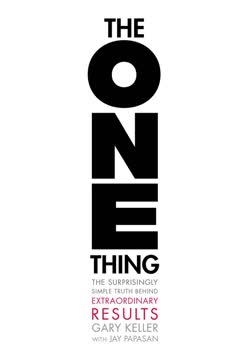
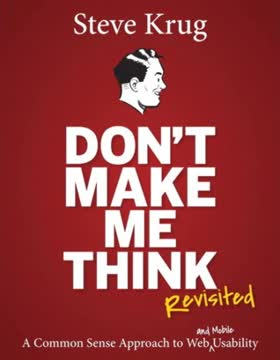
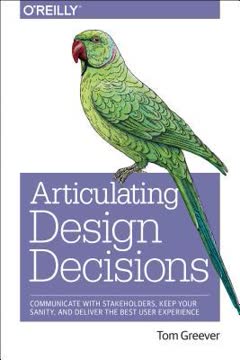
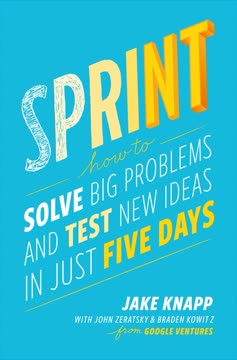
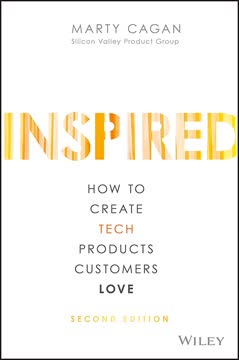
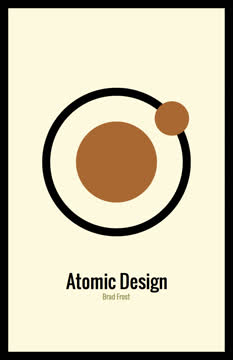
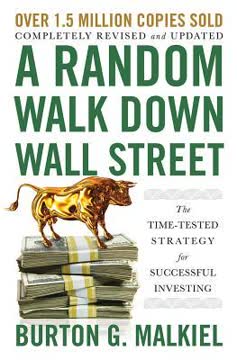

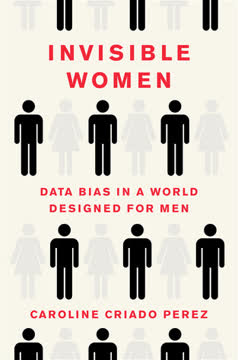
Download PDF
Download EPUB
.epub digital book format is ideal for reading ebooks on phones, tablets, and e-readers.









